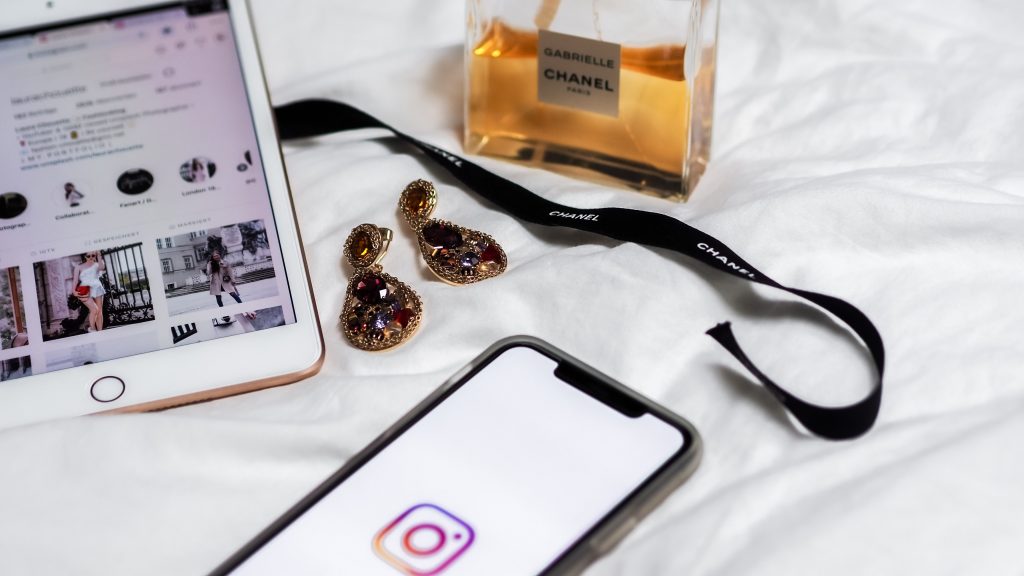Competitive brand research is one of the key elements in creating your brand identity. It’s so important that you should do it right away, before you even start on your own logo or banding.
This way, you’ll know what’s out there already, so you’ll be sure to land on branding that’s unique in your market. When you already have a grasp of what competitive beauty brands have chosen for their branding, you can purposely make your own brand stand out in the crowd.
This isn’t about copying, either. Quite the opposite. You want the market to see your brand as unique and distinct from the competition. Your brand identity can go a long way in setting you apart, but only if you take the time upfront to understand what exists in the market already.
Make a competitor list
Step one is to create a physical list of your closest competitors. For more information on how to find them, check out our article on competitive brand research. You’ll want to pull in your direct competitors—or the companies who make the same product(s) you do for roughly the same price—and your indirect competitors—companies who make a similar product aimed at a similar market.
#1-3: The basics
For each competitive company you’ve found, note the following basic details:
- Business Name
- Business Description
- Business URLs: main website, social media pages, etc.
Market Positioning
Next, you’ll answer a series of questions designed to help you uncover how these competitive brands are positioned in your marketplace. Once you have this fundamental knowledge, you’ll be much better equipped to position your own beauty brand for success.
#4: Who is the target audience?
The target audience for your competitors is possibly the most important element in how they’ve positioned themselves in-market. If they’ve done the job right, you should get a clear idea from their brand’s design and copy who their target audience is.
For example, if their packaging features packages of women with a few streaks of gray in their hair and talks a lot about “recapturing youth,” you know that their target demographic is probably women in their mid- to late thirties and above.
Larger competitors can be Googled. Just search for “Who is [enter company name here]’s target audience?” Many big companies will even talk about their target demographic right on their website. You can usually find this kind of thing on their About page or in their Mission Statement.
#5: Strengths
You should have a good understanding of what your competitors do well, and how they’ve made themselves unique in the market. What are their strengths? To find out, answer the question, “Why would someone buy a beauty product from them instead of from someone else?”
#6: Weaknesses
And of course, on the other side of the coin, every brand also has weaknesses. So dig deep and find out where they fall short. You can often find this information in online reviews. Answer the question, “What would prevent someone from buying their beauty product?”
Visual Branding
Now that you’ve done your research on the in-market positioning of your competition, take the time to look into why they made the visual branding choices they did. You’ve already got a leg up from checking their web presence and target market for clues. Now, look at the visuals themselves to ensure you set your own brand apart.

#7: Logos
Create a folder just for competitive brands’ logos. Put any submarks or variants of the logo here as well, since brands will often use slight variations in different marketing pieces.
#8: Colors
Do you notice any trends in the color palettes of your competition? If so, make a note of them, and try to see if you can identify why certain colors get chosen more often. Now is a good time to look at color psychology and cultural color meaning at least a bit. This may not necessarily determine your own color palette, but it can help you understand your competitors better and make an informed decision around your own beauty brand.
#9: Imagery
Do you notice any themes in images that come up again and again? Be attentive to how your competitors use images in their marketing and packaging. Make note of what their images show, and what “tone” is conveyed when you look at it. If you see something especially clever or captivating, note that too.
#10: Typography
Discover the types of fonts your competitors use most, and where they use them. Are they using sans serif, serif, or handwritten fonts? (If you aren’t sure, check out this article all about fonts and this one on choosing a font for your logo.) If you want to identify their exact font, you can use WhatThe Font and the free Chrome extension.
Written Copy
Finally, read your competitors’ written copy where you can find it: on their website, social media, packaging, etc. Look closely at the language they use, and which words you see most frequently.

#11: Tagline
What taglines do you see on their website that are repeated on social media? Often, the tagline will appear in their logo or right next to it, at the top of their home page. You’ll also see this same tagline or variations repeated on their blog and social media posts.
#12: Mission Statement
If your competitors list their Mission Statement online, it’s probably somewhere on their About page. Large companies may even have a separate “Mission Statement” page. Read it carefully several times to identify what their core message is, and who it’s for. What problem are they solving?
#13: Personality and Vibe
Just like people, brands have personalities. For each competitor, see if you can sum up this personality in just one word, like: Funny, Quirky, Elegant, Edgy, etc. You should see this reflected in both the language tand the visuals they use.
If you can’t quite put your finger on how to describe the brand’s personality, it may mean that they haven’t established one clearly enough. This is also something you should note. Write down what is confusing, and why, so you can avoid similar confusion with your own beauty brand.
#14: Frequently Used Words
Which words do you see showing up time and time again in your competitors’ copy? Do they emphasize specific words? If so, they’re important. Write them down as a note of what has seeped into their brand language.
Repeat, and Review Your Findings

Complete the above analysis, answering all 14 questions, for at least 5 direct and 5 indirect competitors.
You should be able to spot trends in your competitors’ market positioning, visuals, language, or all of the above.
Where do all of your competitors share traits, and where do they differ? Do they blend together in certain areas where you could make sure to stand out?
Question Everything
Get used to asking why certain decisions have been made. Why have brands chosen certain images or language, and how does it relate to their target audience?
If you can connect the dots, you can brainstorm ways to reach that same audience in a completely new way that will set your beauty brand apart.
If you notice clear patterns in color choice, decide whether the meaning behind those colors is important enough that you should use a similar palette, or if it would be better for you to select completely different colors that will jump out to customers.
Summary and Next Steps
This competitive research takes time, but it will provide you with invaluable insight into the state of the market. Understanding what your competitors are doing (and why) will help you be more intentional with your own beauty brand so that you can jump out at customers when they shop.
So, make sure you don’t skip this crucial step when designing a logo and branding for your own line.
Once you’ve done it, it’s time to move onto the deep work of designing your own beauty brand. A good place to start is a mood board—more on that process in this video.
Want to learn more?
For a start-to-finish look at more on how to build and grow your beauty business, check out our course, Learn How to Launch a Beauty Product. We cover every aspect of starting a beauty business, from creating a solid foundation and getting funding to manufacturing, branding, sales, and marketing. This guided approach keeps you on track and makes the process feel less overwhelming. To learn more about turning your product ideas into reality, sign up for our newsletters and read more about the course here.

